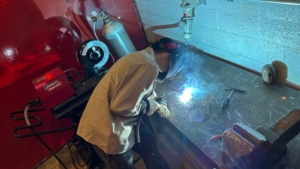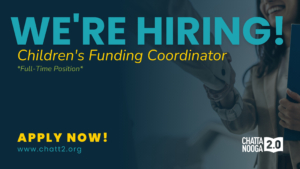On May 15, 2001, at the peak of the dot com era, Apple announced plans to open 25 retail stores across the US, the first two opening just four days after the announcement. A visit to any one of the more than 500 retail locations that has been opened since, makes it clear that the organization’s visionary prowess was not limited to creative marketing and delivering innovative computing solutions. While consumer electronics retail giants like Comp USA, Gateway, and Circuit City were boarding up windows and closing down shop because of the exponential growth of online shopping in the decade that followed, Apple created a way to make shopping cool again. They made it so cool, in fact, that after 8 straight years of record growth in their retail locations, Apple’s competitors took note—most notably, Microsoft. In 2009, Microsoft opened their first retail stores; inarguably modeled to look and feel like Apple Stores.
If you have ever visited an Apple Store, you have likely been met with a palpable energy, a swath of millennial Apple Geniuses, and a crowd of like-minded consumers. Despite copying the model, down to the open-concept layout and fixture designs, Microsoft stores feel much different. If you can find a store to visit, you likely find the same t-shirt wearing employees, but no buzz, no energy, no excitement—and worse yet (for Microsoft), no crowd.
Sure, Apple was the first computing giant to rethink retail, but why can’t their strongest competitors seem to figure out how to leverage the same strategy? Perhaps the issue lies in a misunderstanding of how to replicate successful innovations. Microsoft studied the success that Apple was having in their retail locations and decided to replicate the strategy…down to the very furniture and lighting concepts that Apple was using. They had all of the right pieces and players to step in and steal some of Apple’s retail market share. But, clearly, Microsoft has not found the secret sauce for retail success. The reason? Microsoft focused on the mechanics of how Apple succeeded in retail, but they failed to understand the core values of why the strategy worked.
It is nearly impossible to replicate someone else’s successful innovative strategy because our natural instinct is to imitate their behavior without taking the time to understand how their behavior aligns with their core values. Apple has made its mark by seamlessly integrating software and hardware for a uniquely organic computing experience. To understand Apple products, you need to touch them, see them, experience them. Microsoft, on the other hand, is a software company that dabbles in niche hardware markets. To experience Microsoft’s flagship products, you have to use another manufacturers device. You need a PC to use Windows. As a result, merely walking into a Microsoft store leaves you at least two or three clicks away from experiencing their core product. The result is clear. People camp out for days to get into Apple Stores for a product launch, while Microsoft retail stores often have more employees than customers.
This notion of misguided attempts to replicate innovations is not isolated to tech retail. It happens across all industries. This has happened in education for decades. Leaders see an innovative strategy successfully implemented in another district and they rush to bring it to theirs. Unfortunately, like Microsoft, when attempting to replicate innovative strategies, leaders inadvertently fail to unpack and understand the core values that made the innovative strategy successful in the first place. Instead, they focus on replicating the mechanics of the strategy; which leaves the stakeholders grasping at hollow initiatives that devolve into solutions that are either mandated from the top, or enforced through direct assessments. The result, well-intended, research-based innovations fail to scale beyond the original institution. When that happens, effective solutions are unintentionally relegated to buzzwords, rendered void of their original potential to positively impact student growth.
Typically, when organizations attempt to scale innovations, they employ the following logic model: (1) Identify best practices, (2) deliver professional learning that standardizes and distributes best practices, (3) develop metrics and evaluation mechanisms, and (4) incentivize (or mandate) adoption of innovative strategies. The problem with this formula is that it is developed with a sole focus on replicating the mechanics of an innovative solution. By starting with the identification of best practices, the initial fail point is overemphasizing the mechanics of the strategy. Once that occurs, a disconnect grows as procedures are taught without a connection to a localized context. With the first two steps being rooted in mechanism replication, metrics and evaluations are developed to assess procedures rather than effectiveness. We end up assessing whether or not we observe particular behaviors, instead of assessing the depth and effectiveness of the results the behaviors were intended to deliver. As practitioners (end-users) see and feel this misplaced focus, leaders are left to create artificial means to foster compliance or false buy-in instead of genuine practitioner ownership.
However, this degenerative innovation cycle is not the only option. It is possible to incubate innovative solutions, pilot and measure their impact, and bring them to scale. In Chattanooga, this has been happening for several years. Five years ago, the PEF Innovation Hub launched Teacherpreneur to give teachers the platform and support needed to develop and share practitioner led innovations. This program, which has successfully elevated teachers and the teaching profession, is giving rise to an ecosystem that values and embraces teacher-driven solutions. Similarly, with the emergence of STEM School Chattanooga as a nationally recognized platform school, solutions are incubated in a nimble environment and then shared throughout the district with a high degree of fidelity. From instructional strategies like project-based learning, to digital fabrication labs with localized implementation models (moving from 1 Fab Lab at the STEM school to 17 Volkswagen eLabs across Hamilton County Schools), Chattanooga is quickly becoming a national model for how a school system can leverage practitioner-led innovation to positively impact student growth.
To successfully scale innovative models beyond their initial incubation environment, a new formula is needed. (1) Find a model to serve as the beacon, (2) articulate why a specific innovation should be replicated in a new context, (3) identify highly effective practitioners who are ready to redefine the standard operating procedure, (4) develop a framework for implementation around the core values of the innovation, (5) co-construct a contextualized implementation model (collaboration between content experts and context experts), (6) evaluate the effectiveness and iterate within each context to improve effectiveness, and (7) provide access to a network of support.
Our community holds the solutions to many of our biggest challenges. We must continue to empower innovation from the bottom-up and unlock the potential of practitioner-led innovations!
—–

Michael Stone, Director of Innovative Learning
Public Education Foundation





